The 4 Pillars of Powerful Brand Identity Design


Brent Walrath
This post was originally published in May 2019 and has been updated for accuracy and comprehensiveness.
Effective brand identity design is crucial for differentiating a business in a competitive market. A cohesive brand identity conveys credibility and stability, significantly influencing purchasing decisions and fostering long-term partnerships.
In this chapter, we delve into the importance of brand identity and offer a detailed guide to developing a unified corporate identity design using four key assets of the brand design process.
Four Assets of the Brand Design Process:
- Look and Feel
- Logo
- Colors
- Fonts

B2B Marketing Strategy Framework: The Ultimate Guide to Business Branding
Learn how to build a strong brand experience with our downloadable guide.
Visual Branding in B2B: How to Build Trust through Design
Visual branding is more than just aesthetics. It is the foundation of your company’s first impression. From the moment someone encounters your brand, your brand identity design communicates your professionalism, credibility, and core values.
In B2B environments, where trust and long-term relationships are key, these visual cues play a critical role in building recognition and influence. A strong visual identity not only captures attention but also reinforces loyalty and aligns your image with your brand message.
- Clarity: Communicates your value proposition with precision.
- Consistency: Delivers a unified experience across all platforms.
- Character: Helps your brand stand out in a competitive market.
- Connection: Engages real decision-makers on a human level.
If you are unsure where to start in the brand design process, begin by analyzing your competitors within your industry, noting both the strengths and weaknesses of each. This allows you to identify opportunities for your company to differentiate itself and create a distinct visual identity that sets you apart from the competition.

Subscribe to EBQ's Bimonthly Newsletter

Subscribe to EBQ's Bimonthly Newsletter
How to Create a Clear and Cohesive Brand Presence
Brand identity assets are the key visual and strategic elements that represent a company’s values, mission, and positioning. These assets communicate your brand’s message consistently across all touchpoints, from marketing materials to customer interactions.
These four core brand identity assets serve as the foundation for building a cohesive and recognizable brand, ensuring that your business leaves a lasting impression on your audience. In this section, we’ll explore four essential assets and explain how they work together to create a unified brand presence that people remember.
1. Look & Feel
Look and Feel refers to the combined visual and emotional experience your brand delivers. Together, they ensure that your brand is not only recognizable but also resonates with your audience in a meaningful and consistent way.
While your brand’s “look” and “feel” are distinct entities, they work together to create a cohesive and lasting impression. Once you identify your brand’s desired look and feel, selecting additional design elements becomes a more straightforward process.
Creating a memorable brand look requires:
- Defining a clear direction for your brand
- Understanding basic graphic design principles to maintain visual consistency
- Selecting colors and elements that reflect your brand’s personality
- Identifying necessary variations for different formats (e.g., digital vs. print)
When shaping the “feel” of your brand identity, it’s essential to ask:
- What message and emotion do I want people to associate with our brand?
For example, when EBQ developed our own brand design, we focused on conveying authority and reliability. Our goal was to maintain a professional tone while ensuring an approachable and accessible presence.





2. Logo
What do the most successful companies have in common? They all have recognizable logos.
An effective logo must be clear and legible at every size. It should use a limited color palette and convey your brand’s identity through its design alone.
At EBQ, our logo evolution reflects this principle. Over time, we simplified the design and adopted a brighter, more modern color scheme to better align with our brand personality.

Regardless of your chosen style, your logo should be contemporary and help your business stand out in a competitive landscape.
3. Colors
Strategic color choices can significantly impact perception. In fact, studies show that using the right brand colors can boost recognition by up to 80%.
However, color perception varies across cultures, and what resonates in one region may carry different connotations in another. Therefore, for brands operating in global or diverse markets, it’s important to tailor your color choices to align with the cultural context of your target audience.





How certain colors can help shape brand perception:
- Black and grayscale exude prestige, value, and timelessness, often appealing to luxury markets.
- Blue conveys trust, stability, and professionalism. It’s widely used in corporate and tech branding to inspire confidence and a sense of reliability.
- Red evokes urgency, passion, and energy. It’s an attention-grabbing color that is effective in industries aiming to stimulate excitement or fast action, such as retail and entertainment.
- Yellow/Gold suggests optimism, creativity, and warmth. It’s often used to create a friendly, inviting brand image that feels energetic and forward-thinking.
- Green symbolizes growth, health, and sustainability. Frequently used in wellness, finance, and environmental sectors, it communicates balance and a connection to nature.
EBQ’s branding and identity design experts recommend selecting no more than three primary brand colors to ensure consistency across marketing materials. It’s important to maintain sufficient contrast between these colors to enhance readability, especially in digital content. For accessibility and compliance, tools such as WebAIM’s Contrast Checker can help validate color combinations and optimize legibility.
4. Fonts
When it comes to font, legibility should always be a top priority. That said, your font choice also offers an opportunity to express your brand’s personality. A typeface should align with the tone and visual direction of your brand without distracting from your message or hindering readability.
You’ll generally choose between two primary styles of font: serif and sans-serif.

| Serif Fonts | Sans-Serif Fonts |
|---|---|
| Small strokes on letters improve legibility by guiding the reader’s eye. | Clean lines with subtle strokes guide the eye, enhancing legibility. |
| Convey sophistication, heritage, and professionalism. | More legible on screens and give your branding a modern, sleek appearance. |
| Popular with universities, law firms, and long-established institutions. | Favored by tech companies, startups, and digital brands for innovation and simplicity. |

B2B Marketing Strategy Framework: The Ultimate Guide to Business Branding
Learn how to build a strong brand experience with our downloadable guide.
EBQ’s Brand Identity Assets and Strategy
As your business evolves, so should your brand identity. At EBQ, we continuously refine our branding approach to stay aligned with shifting market trends and build stronger connections with our audience.
Choosing the right partner to design your brand identity can be a significant decision for B2B business leaders. EBQ’s Graphic Design Branding services provide a dedicated team to craft intuitive designs and impactful visuals that strengthen your brand.
